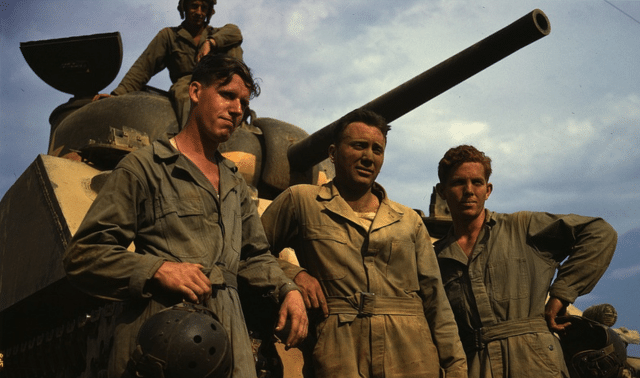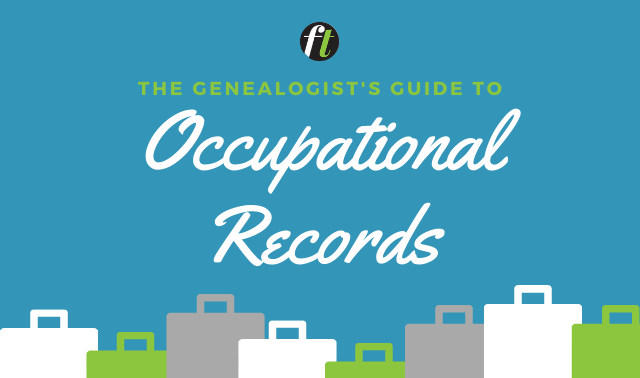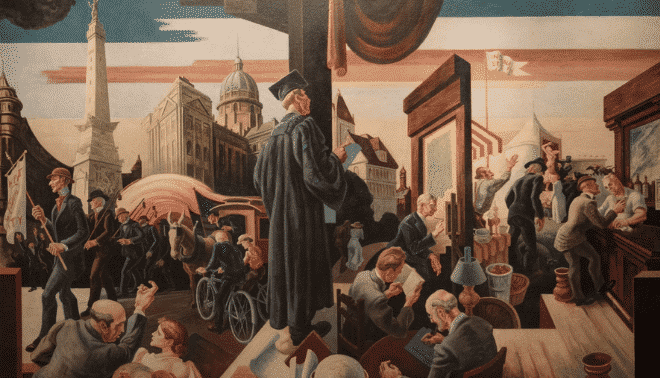When the 1950 census images were released in April 2022, genealogists everywhere scrambled to find their families (and sometimes their own names) on those pages. Those who were well prepared probably found them, even in the days before a searchable index became available.
Filling in the blanks about your family members’ lives between the 1940 and 1950 censuses not only helps you find them in the latter, but also enriches your understanding of them in that critical period of US history. You’ll better appreciate how they experienced one of the century’s most change-filled decades, when the nation transitioned from the Great Depression to World War II, then slid into an uneven postwar period, and finally entered the Korean War in 1950.
Fortunately, the 1940s are rich in records for many people. In this article, I’ll share several record types you can use to find your family in the 1940s as I follow my maternal grandparents as teens and young adults.
You may find, as I have, that these records reveal names, dates and relationships that help you build your family tree. They often include story-building snippets about employment, schooling, wartime and daily life.
1. Family Memories
Many people living today remember the 1940s, or they’ve had memories passed on to them. So be sure to start your search by talking to your relatives.
First, if your relatives were alive during the 1940s, establish where they were living, and with whom. If they weren’t alive yet, ask about relatives who were. If they’re not sharing their own memories, ask how they know what they’re telling you. Their answers can help you evaluate the reliability of their information and may even lead you to additional resources, such as family letters or photos. Or they can explain for you why the family was living in an unexpected place, or who a mystery person living with them was. Bring any documents you already have with you to help jump-start their memory.
In family interviews, keep your tone casual and respectful. You don’t want loved ones to feel overly pressured to recall a key clue or solve an intriguing mystery. They may fear judgement of their loved ones or their past way of life. For a win-win experience, encourage them to share recollections they care about, not just answers to your questions. Bonus: you may learn something you didn’t know to ask.
2. The 1940 Census

The 1940 census was taken April 1. Given the nation was emerging from the Great Depression, this census captured extensive information about work. Everyone over age 14 was asked a whopping 13 questions about employment status, including their actual income in 1939 and how many hours worked in a given week (or length of unemployment). Find a list of questions and a downloadable transcript form.
From this census, you can also learn whether someone was working in a government-funded job such as the Civilian Conservation Corps, Works Progress Administration or National Youth Administration. Such work may have left its own considerable paper trail. Order employment-related files from the National Archives Personnel Records Center.
The census offers an interesting look at my grandparents (see above), who were young and hadn’t yet married. The lives of those two young people would change dramatically in the coming decade—by its conclusion, they would be married with two children.
But at the time, my grandfather, John Felix Jr., was just 16, the only child living at home. He had finished his first year of high school. His family owned a home worth $400 on a rural route outside the city of Pueblo, Colo. His future wife, my grandmother, Barbara Jane Hall, was only 11, and the youngest of three children. Her family rented a home for $15 a month in the now-abandoned town of Lime, south of Pueblo.
The 1940 census is free to explore at FamilySearch and at subscription websites Ancestry.com, Findmypast and MyHeritage.
3. School Yearbooks

By the 1940s, most high schools and colleges had annual yearbooks that named and pictured their students. If your relatives would have been teenagers or young adults, look for them in yearbooks and any other school-related records.
Yearbooks can reveal surprisingly meaningful information. They usually suggest a student’s approximate age and place of residence. You often find unique photos and biographical details, such as membership in the glee club or the designation of “most likely to end up in jail.”
Sometimes you’ll find siblings or even future spouses listed in the same yearbook. My grandparents both attended Central High School in Pueblo, but graduated too far apart to appear in the same volume. You can see their senior-year yearbook pictures above, taken in 1942 and 1946 respectively.
Hundreds of millions of yearbook entries are searchable at Ancestry.com and MyHeritage. If you don’t find yours online, contact local public libraries, historical or genealogical societies, or school board offices. Some state genealogical society libraries, such as the Ohio Genealogical Society, have extensive yearbook collections, too. Learn more about finding yearbooks and other school records.
4. Newspapers

During the 1940s, newspapers and radio were the primary means of public communication. People read the news with the same avidity that they now scroll through social media feeds. During this decade, you might find coverage mentioning a loved one’s birth education, prowess on the sports fields, military service, employment, wedding, home purchase or other life event big and small.
Digitized newspapers are searchable on many sites. Consult the free Chronicling America and Google News archive search, and ask your favorite libraries what digital newspaper subscriptions they have. Use your subscriptions to sites such as Newspapers.com, GenealogyBank and MyHeritage.
However, note that digitized editions from the 1940s are not as common in major newspaper collections, because they are (in many cases) still copyright-protected. You may have to try other strategies.
First, discover what newspapers were in print for your family’s hometown in the 1940s at Chronicling America using the US Newspaper Directory. Then run targeted online searches for those newspapers. You might luck into digitized editions or at least find what libraries have print or film editions.
Be willing to search creatively and perhaps a little further afield than you might typically. I couldn’t find John or Barbara in any 1940s digitized newspapers, or access to any Pueblo papers near me.
Finally I searched Newspapers.com for the term Pueblo Wildcats, the name of John’s football team. In a fall 1942 issue of the Greeley Daily Tribune, an article announcing a Wildcats game (from the opponent’s point of view) appeared on the same page as a report of “9 Army Fliers in Training Killed Thurs.” It was a bleak reminder that the same boys who ran out on the field might within months be put in harm’s way. John hadn’t yet enlisted in the Army Air Corps, but he would soon become one of those fliers.
My mother came across another news clipping from the CF&I Blast. The publication, a company newspaper for the Colorado Fuel & Iron Company, where John, his father, and other relatives worked, is dated 19 May 1944 and spotlights John and his half-brother. “Talbott and Felix serve” says a headline above pictures of both boys in uniform. John is described as “Pfc John Felix Jr., a former C&W switchman, who has been in the Army since Feb. 1943. He is a flight engineer in the Air Corps and at present is stationed at Tyndell Field, in Florida.” The article comes from the CF&I Archives at the Steelworks Center of the West, which is available for research by appointment.
5. Employment Records
Like that CF&I article shows, records relevant to a person’s work can offer a window into their lives. How will you know where someone worked? In addition to clues from the 1940 census, you may also learn about occupations in:
- City directories (described later)
- Draft registrations
- Social Security applications (SS-5 forms)
- Newspaper articles, including later obituaries
- Records created by employers
Draft registrations and Social Security applications both requested employment information, along with other key genealogical details. All surviving WWII draft registrations are searchable on Ancestry.com, and you can order qualifying Social Security records online.
Actual employment records don’t always survive. And if they do, they aren’t easy to find. But you might get lucky like I did—Ancestry.com hosts a collection of Colorado Steelworks records. John’s employment record, dated 1951, lists several positions he’d held during the 1940s, including his pre-war stint at CF&I as a truck driver, “cold saw hlpr” and “switchman.”
War may have generated employment records even for your civilian family members. The US armed forces enlisted some 16 million people during World War II—and an additional 3.5 million workers in federal civil service. Find records of wartime service at Fold3. Ancestry.com has an enlistment records index; my grandfather’s 1943 record confirms his prior work as a “semi-skilled switchm[a]n, railroad.”
6. Vital Records
You may already have some records pertaining to births, marriages and deaths of those who were alive during the 1940s. These are key for helping you build your family tree, recognize relatives in other records, and understand their lives. But do you have all the records you should?
Though government vital records were created more consistently during the 20th century, getting copies can be challenging. Privacy laws may restrict access to recent records to qualified next-of-kin, and even records that are available may not yet be online. In the likely event that you need to request records from an office, see the guide to handling state-level vital records.
If your relative was born in a rural area or before the adoption of civil registration, they may not have had any kind of record created at their time of birth. Those who didn’t may have applied for a delayed birth record. Birth records were needed to enroll in Social Security after the late 1930s, as well as to prove identity and citizenship for wartime service or military dependent benefits. Delayed birth records may or may not be kept with other birth records; ask at the local and state level.
Marriage records from the decade, too, can be enlightening. You’ve likely heard stories about WWII wartime and postwar romances. In a hurry to wed, many young couples crossed state lines to take advantage of a neighboring state’s less-strict age or parental-consent laws.
Such was the case with my grandparents, who crossed the border to marry in New Mexico. When I took this question back to my relatives, I learned that the parents of 18-year-old Barbara initially disapproved of John. After secretly marrying, John and Barbara quietly returned to their parents’ homes for a time.
My relatives also shared lovely newlywed photos that I hadn’t seen before, as well as their marriage record (which isn’t available online). Another benefit of returning to ask more questions!
Following the 1940s surge in marriages was a surge in divorces, as some of these hasty unions didn’t survive. Divorce records aren’t as easy to access, but can provide a wealth of context about why things didn’t work out.
7. City Directories
One of the richest sources for tracking 1940s families can be city directories, available for many places in the United States. City directories were commercially printed volumes that had alphabetical listings of households, businesses and other local organizations. Entries in the 1940s often include the names of both spouses, home address, an occupation (often his) and (sometimes) whether the family owned or rented.
A poignant 1945 entry shows the state of things for John’s parents’ household as the war wound down. John appears as John Jr. at the same address as his parents, John J. Felix (Sr.) and Minnie Felix. My grandfather was still in the military (“USA” was his occupation), and his mother appears as a “wid[ow]” since his father had passed away after John Jr. enlisted.
Subsequent directories convey just how much John’s life changed. By 1948, John had married Barbara, who herself earned a separate entry because she was in the workforce as a telephone operator (the only place I’ve found that clue). By 1950, Barbara had two children and had likely left her job; she was listed only parenthetically after John’s name. The 1948, 1950 and 1952 listings have the same rural route address as John’s parents: Siloam Star Route.
8. 1950 Enumeration District Maps
As your 1940s record trail approaches the decade’s end, you’ll want to watch for relatives’ addresses. An address can help you pinpoint their location on 1950 census enumeration district (ED) maps, which are available online. These maps, in turn, can help you find your family’s entry in the 1950 census images if name-searches fail.
That functionality aside, ED maps are worth exploring on their own merits. Available online for free, they offer a snapshot of your family’s neighborhood from the late 1940s or thereabouts. (The maps were collected from a variety of sources, and actual dates may vary.)
Over 8,000 county and urban ED maps are digitized in the National Archives Catalog. The fastest way of finding the one you want is by using the free Stephen P. Morse One-Step search. Simply select the locale from the drop-down menu, then click to view maps on the NARA website.
My grandparents’ address for that time—Siloam Star Route—was a postal delivery rural route, not a precise street address. Deeds and family memories point me to a stretch along Thatcher Road in Pueblo. My relatives even gave me a picture of the young couple in front of the house they built with their own hands next door to where John’s mother lived.
At the time, this address was outside the city limits, so I had to consult the “urbanized area” ED map (rather than the map of Pueblo city proper). It’s a faint map that shows little in the vicinity but the city airport.
Thanks to all these 1940s finds, I now know where my grandparents should appear in their first census as a couple. I can even picture the front stoop where an enumerator may have stood to ask them questions. But I also have a much more powerful appreciation of who John and Barbara were, and where they were in life—not just where they’ll be in the 1950 census.
Related Reads
A version of this article appeared in the March/April 2022 issue of Family Tree Magazine. Last updated: April 2025









